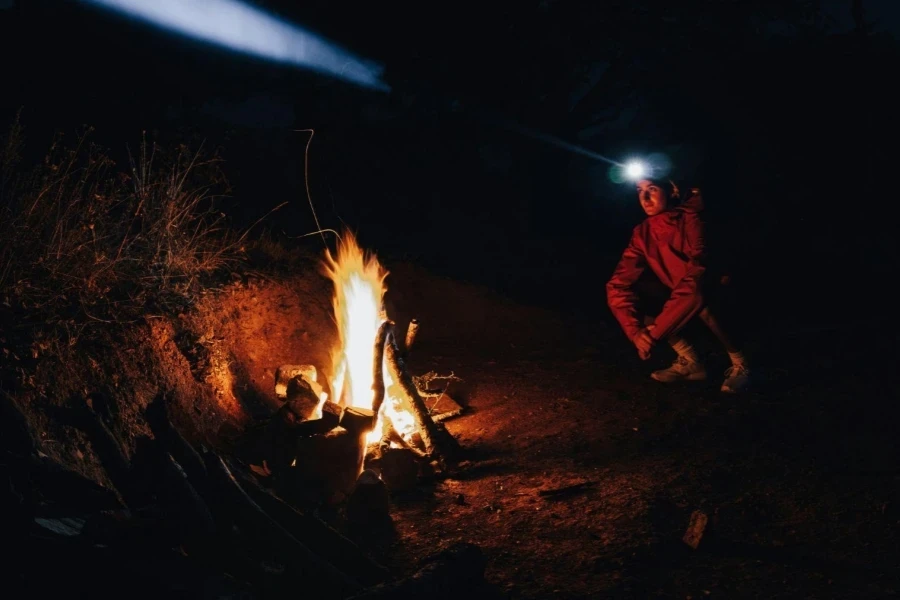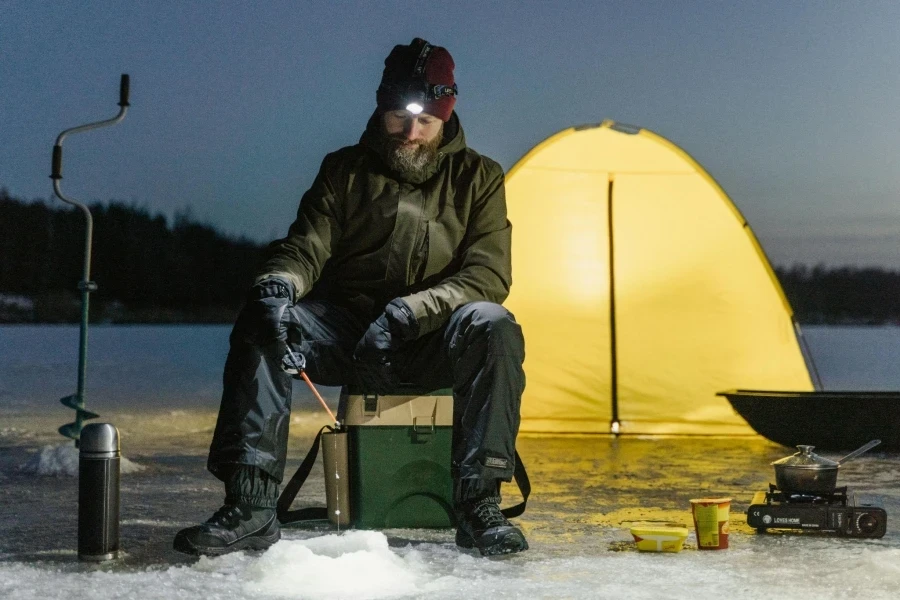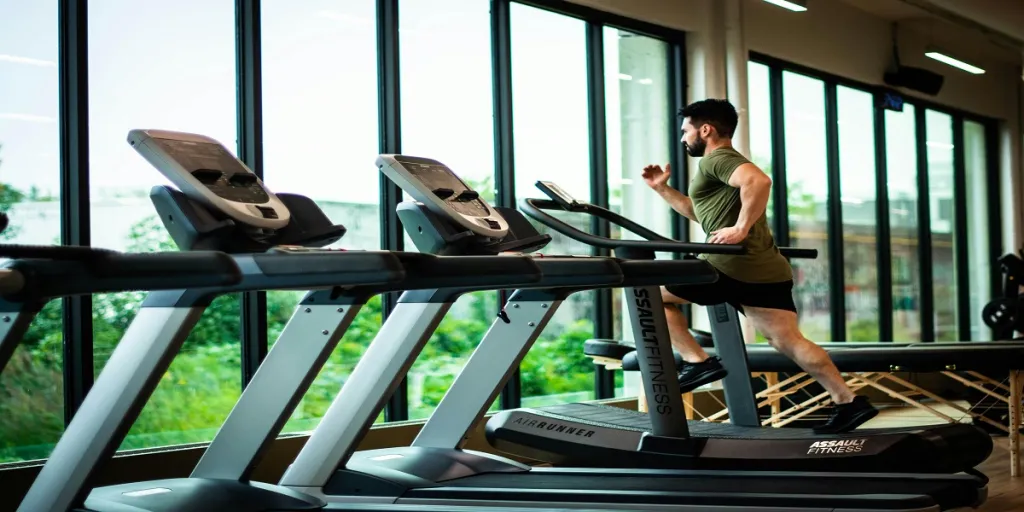Table of Contents
● Introduction
● Key Types of Camping Headlamps and Their Uses
● Camping Headlamp Market Overview for 2025
● Crucial Factors to Consider When Choosing a Headlamp
● Leading Camping Headlamps for 2025: Top Models and Features
● Conclusion
Introduction
Camping headlamps are essential tools for any outdoor activity, providing hands-free illumination during nighttime adventures. These compact, portable lights offer a range of benefits, from enhancing visibility on trails to improving safety in dark environments. With new innovations each year, the headlamps of 2025 are designed to meet the evolving needs of outdoor enthusiasts. They combine powerful brightness with extended battery life, ensuring a reliable source of light in various weather conditions. When selecting a headlamp, it is crucial to consider factors such as beam distance, comfort, durability, and energy efficiency. These features determine how well the product performs in different outdoor scenarios, making it important to choose wisely for optimal user experience.
Key Types of Camping Headlamps and Their Uses

Different types of headlamp beams: flood vs. spot lighting and when to use each.
Camping headlamps typically feature two main beam types: flood and spot. Flood beams provide wide, even light, ideal for close-range activities such as setting up a tent or cooking at camp, as they illuminate a larger area with minimal shadows. Spot beams, on the other hand, offer a focused, narrow light, making them perfect for activities like hiking or climbing, where long-distance visibility is crucial. Spot beams help users see obstacles and markers at a distance, offering precise illumination for navigating trails or rocky surfaces in low light.
Key categories based on activity: hiking, camping, trail running, and climbing.
The type of headlamp selected depends largely on the intended outdoor activity. For hiking, headlamps that are lightweight, durable, and offer adjustable brightness are preferred, as they allow for flexibility in different conditions. Camping headlamps typically combine both flood and spot beams to cater to various tasks around the campsite, while also emphasizing comfort for extended use. Trail runners seek compact, sweat-resistant headlamps that are bright enough to navigate trails at speed. Climbers, needing robust, weather-resistant options, often opt for headlamps with specialized features like red light modes to preserve night vision while reading maps or navigating difficult terrain in low light.
The role of specialized headlamps with red light features for night vision preservation.
Red light features in headlamps are particularly beneficial for preserving night vision. Unlike white light, red light does not compromise the eyes’ adjustment to darkness, making it ideal for activities that require prolonged exposure to low-light conditions, such as climbing or hiking at night. Red light helps users maintain visibility without disrupting their surroundings or disturbing wildlife. Additionally, it can extend battery life, making it a practical choice for those who rely on their headlamp for longer periods in the wilderness or during survival situations.
Camping Headlamp Market Overview for 2025

Based on the latest information gathered from several reports, the global camping headlamp market is projected to grow significantly in the coming years. The market was valued at USD 2.70 billion in 2023 and is expected to reach USD 5.90 billion by 2030, with a compound annual growth rate (CAGR) of 10.50% from 2023 to 2030. This growth is driven by increasing demand for portable lighting solutions in outdoor activities such as camping, hiking, and backpacking, according to Report Prime.
Analysis of recent trends in the camping headlamp market.
Recent trends in the camping headlamp market reflect a clear shift toward greater functionality and sustainability. LED technology continues to dominate, offering energy-efficient lighting solutions with longer lifespans. Headlamps with adjustable brightness, waterproof designs, and multi-light settings are gaining traction for their ability to perform in diverse outdoor environments. Additionally, features such as Bluetooth connectivity and app-controlled settings are emerging, allowing consumers to fine-tune their lighting preferences for specific activities. As outdoor enthusiasts increasingly prioritize convenience and performance, smart and multi-functional headlamps are becoming more popular.
Market growth projections and consumer preferences for rechargeable vs. disposable models.
Rechargeable headlamps are rapidly becoming the preferred choice among outdoor enthusiasts, with market projections indicating a strong shift toward these models. Consumers are moving away from disposable headlamps due to environmental concerns and the higher long-term cost of replacing batteries. Rechargeable models, which offer longer battery life and faster charging capabilities, are seen as more cost-effective and eco-friendly. This shift is expected to accelerate in the coming years, driven by advancements in battery technology and a growing demand for sustainable outdoor gear. However, disposable headlamps still remain a staple for short-term or emergency use.
Sustainability and eco-friendly practices influencing product development.
Sustainability is becoming a central factor in the development of camping headlamps, with manufacturers focusing on reducing environmental impact. More headlamps are being made from recycled or renewable materials, and energy-efficient LEDs are being used to reduce power consumption. Additionally, solar-powered charging options are becoming more common, allowing users to recharge their headlamps without relying on disposable batteries or electricity. This move towards sustainable product design is not only responding to consumer demand for eco-friendly products but also to broader environmental concerns. As awareness of climate change grows, sustainability will likely continue to shape the direction of the headlamp market, with companies innovating to create products that are both environmentally and performance-conscious.
Crucial Factors to Consider When Choosing a Headlamp

When selecting a headlamp for outdoor activities, several key factors determine its effectiveness and reliability. These elements include brightness, battery life, and durability, all of which impact a headlamp’s performance in various outdoor scenarios. Understanding these aspects helps ensure that the headlamp is not only functional but also capable of meeting the demands of the environment it will be used in.
Brightness: Brightness is measured in lumens and plays a critical role in how well a headlamp performs in different environments. A higher lumen count is necessary for activities like hiking in low visibility or trail running at night. The beam distance, which determines how far the light reaches, is equally important for activities that require long-range visibility, such as climbing or searching in the dark. Headlamps that offer adjustable beam patterns—such as a spot beam for distance and a flood beam for close-up tasks—are ideal for users with varied lighting needs.
Battery life: Battery life is essential when choosing a headlamp, as a higher lumen output often means faster battery depletion. For longer outdoor trips, selecting a headlamp with adjustable brightness levels allows users to balance illumination with energy efficiency. Lower brightness settings can extend battery life, which is particularly important for multi-day excursions. Rechargeable batteries, as well as models that support easy battery replacements, are often favored for extended adventures where access to power may be limited.
Waterproofing and durability: Waterproofing and durability are crucial features for headlamps used in harsh outdoor conditions. Headlamps with higher IPX ratings, such as IPX7, offer better protection against water, ensuring that the headlamp can function even in heavy rain or if submerged briefly. In addition to water resistance, durability is essential, especially for headlamps used in activities like climbing or caving, where impacts and extreme conditions are common. Headlamps made from high-quality materials like aluminum or reinforced plastic provide greater resilience, ensuring a longer lifespan and reliable performance in tough environments.
Leading Camping Headlamps for 2025: Top Models and Features

Best headlamps for hiking and backpacking: Models known for long-lasting performance.
For outdoor enthusiasts, the best headlamps for hiking and backpacking offer durability, performance, and extended battery life. These models are designed to withstand harsh environments while providing optimal illumination. Brightness is key, with many headlamps offering adjustable beams that can focus light or spread it wide. Additionally, lightweight designs ensure comfort over long distances. Advanced headlamp models also include features such as rechargeable batteries, which enhance both convenience and sustainability for long hiking trips. When selecting a headlamp for these activities, it’s important to consider weight, beam distance, and battery life to meet the unique challenges of the trail.
Top rechargeable headlamps for eco-conscious adventurers.
As more adventurers prioritize sustainability, rechargeable headlamps are gaining popularity for their environmental benefits. These models are not only cost-effective in the long run but also reduce waste compared to disposable battery-operated alternatives. Eco-conscious adventurers often look for headlamps with USB charging capabilities, which make recharging on the go easy. Many of these headlamps feature energy-efficient LEDs that provide excellent brightness while extending battery life. The growing trend toward rechargeable headlamps reflects the broader shift toward more sustainable, responsible outdoor gear, which is increasingly being prioritized by consumers in 2025.
Specialized models: Headlamps designed for specific activities like climbing and trail running.
Certain outdoor activities, such as climbing and trail running, demand highly specialized headlamps tailored to the specific needs of the activity. Climbing headlamps typically feature robust durability, with shock-resistant designs and longer battery life to withstand extended hours in difficult terrain. They also often come with multiple brightness settings, including red light for preserving night vision during technical climbs. In contrast, headlamps for trail running are lightweight, with secure fits that minimize bounce while providing bright, focused light that illuminates the path ahead without distracting from the surrounding environment. Both categories require models that balance power and portability while delivering performance in demanding conditions.
Conclusion

Selecting the ideal headlamp for outdoor activities in 2025 involves balancing key factors such as brightness, battery life, durability, and specific features tailored to different environments. A model that combines high performance with comfort ensures reliability in diverse conditions, from long hikes to intense climbs. With growing interest in rechargeable and eco-friendly designs, understanding these considerations will help businesses meet the evolving demands of consumers seeking quality and value. Ultimately, the best headlamp choice is one that enhances outdoor experiences while maintaining functionality and sustainability.




